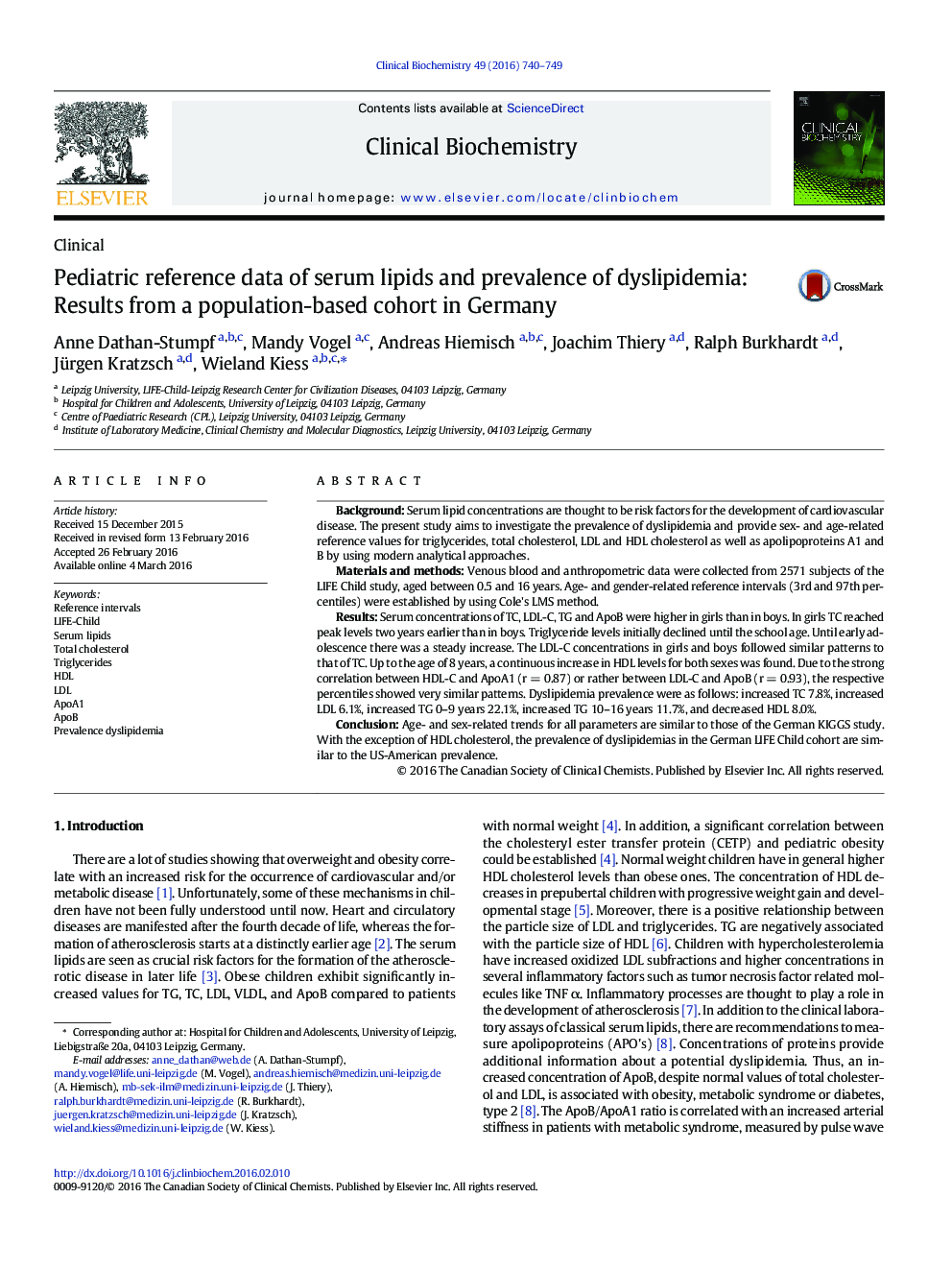| کد مقاله | کد نشریه | سال انتشار | مقاله انگلیسی | نسخه تمام متن |
|---|---|---|---|---|
| 1968456 | 1538861 | 2016 | 10 صفحه PDF | دانلود رایگان |
• Current reference values for TC, TG, LDL, HDL, ApoA1, ApoB in pediatrics defined by modern analytical and statistical methods data
• Presentation more precise in relation to age by means of a new methodological approach
• For the first time German reference values for ApoA1 and ApoB
• Prevalence of dyslipidemia in Leipzig, representative of Germany, similar distributions as in the US
BackgroundSerum lipid concentrations are thought to be risk factors for the development of cardiovascular disease. The present study aims to investigate the prevalence of dyslipidemia and provide sex- and age-related reference values for triglycerides, total cholesterol, LDL and HDL cholesterol as well as apolipoproteins A1 and B by using modern analytical approaches.Materials and methodsVenous blood and anthropometric data were collected from 2571 subjects of the LIFE Child study, aged between 0.5 and 16 years. Age- and gender-related reference intervals (3rd and 97th percentiles) were established by using Cole's LMS method.ResultsSerum concentrations of TC, LDL-C, TG and ApoB were higher in girls than in boys. In girls TC reached peak levels two years earlier than in boys. Triglyceride levels initially declined until the school age. Until early adolescence there was a steady increase. The LDL-C concentrations in girls and boys followed similar patterns to that of TC. Up to the age of 8 years, a continuous increase in HDL levels for both sexes was found. Due to the strong correlation between HDL-C and ApoA1 (r = 0.87) or rather between LDL-C and ApoB (r = 0.93), the respective percentiles showed very similar patterns. Dyslipidemia prevalence were as follows: increased TC 7.8%, increased LDL 6.1%, increased TG 0–9 years 22.1%, increased TG 10–16 years 11.7%, and decreased HDL 8.0%.ConclusionAge- and sex-related trends for all parameters are similar to those of the German KIGGS study. With the exception of HDL cholesterol, the prevalence of dyslipidemias in the German LIFE Child cohort are similar to the US-American prevalence.
Journal: Clinical Biochemistry - Volume 49, Issues 10–11, July 2016, Pages 740–749
